overview of publications 2020 – <>>>>> list of
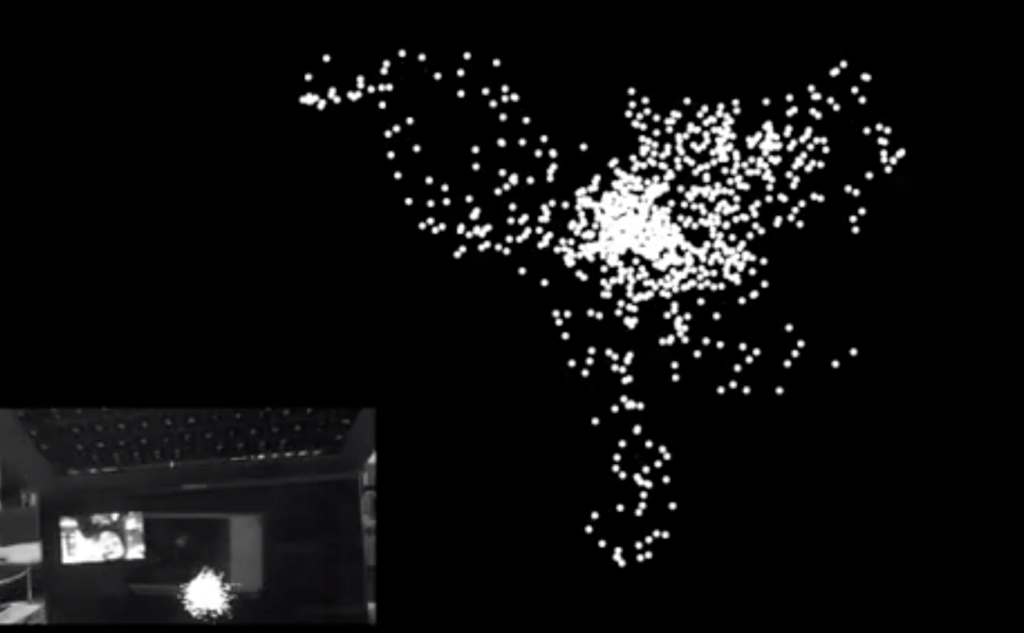
overview of publications 2020 – <>>>>> list of

APAJahrmann, M. (2020, April 14). Neurointerfaces as means of Artistic Research or Expanded Game Art. https://doi.org/10.31235/osf.io/qn65kMLA Jahrmann, Margarete. “Neurointerfaces as Means of Artistic Research or Expanded Game Art.” SocArXiv, 14 Apr. 2020. Web.
Article in print:
Neurocontrollers of games are new consumer interfaces to the inner self, if we consider that they unfold as factual neuro-interfaces that evaluate our personal data and general human condition. Biometric data is gained in everyday life by mobile phones or health wristbands. The ethical dimension of the use of neuro interfaces is hardly questioned, neither in research nor in its artistic applications, which is surprising but a necessity for the self-determined user who is more than an object of produsage. In the centre of this inquiry stand very actual critical art works with life science devices and its corresponding participative games, in an emerging critical art form of neuro-games, in a new form of expanded game art. Brain interfaces for the consumer market target life improvement but in fact they capitalise our inner states in a mode of prosumption.
Expanded game art settings in public installations can fruitfully contribute to the sciences with the advantage of a controllable set of rules, which is useful for the research validity. These art pieces correspond to citizen science games, where scientists use games to analyse data in a collective mode. On the other hand, biometric aspects and neuro-interfaces used in performative installations allow to design a new kind of game art, made of elements of behavioural research and a critical questioning of the interfaces used in play. This argument is elaborated in a series of examples from neurosciences and expanded art games.
project lead: Margarete Jahrmann
Zentrum Fokus Forschung
Austrian Science Fund (FWF): AR 581 Programm zur Entwicklung und Erschließung der Künste (PEEK)
Neuromatic Game Art: Critical play with neurointerfaces
# Wider arts-based research context / theoretical framework
Game Art currently undergoes a rush of presence and importance in the context of artistic research, as it informs methods of insight and experiments. This happens at the same moment as new mobile interfaces linking body, brain, and electronic networks become available in a subtly gamified world. Ludic Theory, the concept of Flow, and the transformative potential of play will serve as theoretical frameworks for a series of publicly performed artistic experiments evolving around neurointerfaces.
# Hypotheses / research questions / objectives
According to our hypothesis the everyday availability of neurointerfaces will create new dimensions of social and ethical questions reaching from of privacy and surveillance to self-optimization, but will also carry the potential for new forms of creativity and interaction. As arts-based research question we take up the challenge to critically evaluate neurointerfaces as technological devices of potential everyday use. Our research objective is the creation of a new form of experimental game art – the neuromatic one – to contribute new knowledge, awareness, and resilience, and to elucidate ethical questions, possibilities and limitations of technologies that intrude the individual brain and to ultimately change self-optimization into self-expression.
# Approach / methods
In a series of staged and performed artworks informed by Game art, concepts of Flow and play, we will create a hybrid interplay and inquiry of questions around personal data and brain measurement informed by the neuroscientific research and techno-philosophical discourse that accompanies the project. By artistic re-engineering neurointerfaces will be transformed from intrusive measurement devices into participative and creative tools.
# Level of originality / innovation
The present project constitutes a unique, original, and urgently needed critical but playful artistic examination of an emerging technology. The prototypes and artefacts of our research, a new innovative form of modified playful neuromatic devices, will be the seed for further artistic and philosophical use.
# Primary staff involved in the project
The highly transdisciplinary project is carried out by five experienced researchers from complementary fields. The leading roles are held by artistic researchers. Margarete Jahrmann is an experienced artist, professor in the artistic research PhD program at Angewandte Vienna and in Game Arts at the Zurich University of the Arts. Ruth Schnell is a leading media artist and holds the chair for Digital Arts, Angewandte Vienna. The techno-philosophical research line is led by Mark Coeckelbergh (University of Vienna). Stefan Glasauer (Brandenburg University of Technology Cottbus-Senftenberg) guides the neuroscientific research. The group will be complemented by several young emerging artists and researchers.
//
Der zeitgenössische digitale Imperativ zur Selbstüberwachung des Alltagslebens beinhaltet tiefere Fragen zu Privatsphäre und Körperdaten. Personenbezogene Daten werden zunehmend online zugänglich gemacht, kapitalisiert und Teil eines sozialen Bewertungssystems. Mit einem wachsenden Markt von Konsumenten-Neurointerfaces wird die Verwendung von Gehirnwellen-Analyse-Geräten, die in die Privatsphäre von Gedanken und Emotionen eindringen, zunehmend als Spiel verkauft – um Benutzer zu beruhigen. Der inhärente gesellschaftliche Zwang zur Selbstoptimierung ist eine alarmierende Folge dieser Tendenzen. Eine kritische Bewertung von Neurointerfaces, die ursprünglich für wissenschaftliche und medizinische Zwecke entwickelt wurden, fehlt bislang. Ebenso gilt es, Phänomene technologisch gesellschaftlicher Zwänge zur Selbstoptimierung künstlerisch zu beleuchten und in spielerischen Experimenten und künstlerisch forschenden Versuchsanlagen zu interpretieren.
Hier schlagen wir vor, diese Herausforderung als kunstbasierte Forschungsfrage anzunehmen, indem wir das Potenzial von Kunst als Aktivismus nutzen und eine neue Form der experimentellen Spielkunst – neuromatic game art – vorstellen. Forschungsziel ist es die Möglichkeiten und Grenzen von Technologien zu hinterfragen und aufzuklären, wie Neurointerfaces das individuelle Leben beeinflussen werden. Letztlich wollen wir die gesellschaftlich gewünschte Selbstoptimierung in künstlerische Selbstdarstellung verändern.
In einem Akt des Widerstands werden neuromedizinische Geräte umkonstruiert, indem zwar Einblicke in die Gehirnfunktion ermöglicht werden, diese Schnittstellen aber als kreative Ausgabegeräte genutzt werden — als ein partizipatives und kreatives Werkzeug der Kunst.
Die durch die künstlerisch forschende Intervention neu entstandenen „Neuromatic Anordnungen “ werden zu innovativen Werkzeugen für künstlerische Projekte und ermöglichen das selbstgesteuerte Spiel mit den eigenen persönlichen Hirndaten zum Zweck der Erkenntnis.
Das Konzept des Flusses von Gedanken im Spiel, Flow wird das Kernstück des Spieldesigns einer Reihe von Kunstwerken, von physischen und öffentlich durchgeführten Experimenten – entsprechend unserer These, dass künstlerische Forschung öffentlich inszeniert werden sollte. Nach Prinzipien der Spielmechanik präsentieren wir ein hybrides Zusammenspiel zur Untersuchung von politischen Fragen rund um persönliche Daten, Selbstoptimierung, Gehirnmessung in Bezug auf mobile Schnittstellen als Werkzeuge des täglichen Lebens. Wir zielen darauf ab, eine sich entwickelnde Debatte als Voraussetzung für gesellschaftliches Bewusstsein und Aufklärung auszulösen.
Jahrmann M (2020). PLAN A for I/motions. Die Kunst des Spiels mit Emotionen und neuen Formen der Kognition. In: Machines Like Us. Reader Donaufestival. Ed. Thomas Edlinger, Falterverlag Wien, pp 95-103.
ISBN 978-3-9504740-1-5
Artificial Intelligence (AI), die künstliche Intelligenzentwicklung und Neurowissenschaften sind seit jeher Forschungsfelder, in denen die Fragestellungen der einen Disziplin die Entwicklungen der anderen anregen
und umgekehrt1. In den aktuellen Formen des mittlerweile geflügelten
Begriffs künstlicher Intelligenz werden biologische Modelle aufgegriffen.
Liegt dies allein an der steigenden Rechenleistung, den großen Sätzen
von verfügbarem Big Data, die eine Umsetzung dieser Konzepte nun
endlich ermöglichen, oder lässt sich ein neues Interesse an den menschlichen Affekten als Grundlage unserer Intelligenz ausmachen? Und wie sieht eine Forschung zu unserer Intelligenz und unseren Emotionen aus, die politisch brisant Machine Learning, Face Recognition und Computational Neurosciences koppelt? Welche Fragestellungen werfen künstlerische Arbeiten auf, die unsere emotionale Begegnung mit der AI und einer möglicherweise sich grundsätzlich verändernden AI thematisieren, die affektives Computing mit einbeziehen. Gibt es Kunst, die damit spielt und auf die Forschung Einfluss nimmt?
Der Wunsch, das biologische Gehirn besser zu verstehen, war ein historischer Ausgangspunkt für die Entwicklung erster künstlicher neuronaler Netze. Durch starke Vereinfachung war es möglich, Funktionsweisen und Raster über Prinzipien lebender Systeme auf Rechensysteme zu übertragen.
Der wunderbare Aufsatz A logical calculus of ideas immanent in nervous
activity² von Warren McCulloch and Walter Pitts (1943) zeigt, dass
bereits in den Anfängen der Computation das Verständnis der Funktionsweisen biologischer neuronaler Netze essentiell für die Modellierung künstlicher Netze war. Maschinenlogik und nervöse Aktivitäten wurden in den frühen Simulationen neuronaler Netzwerke so gekoppelt, wie es in der Kybernetik zweiter Ordnung üblich war, nämlich strukturell. ….
featured image: Valentine Green, Mezzotinto after Joseph Wright of Derby’s A Philosopher Shewing an Experiment on the Air Pump (1769), from the catalog Wright of Derby, New York 1990
Jahrmann M (2020). LUDIC GAMES: PLAYFUL FORMS OF INSIGHT. In: Teaching Artistic Research. Ed. Ruth Mateus-Berr, De Gruyter, Berlin, pp 30-40.
Jahrmann M (2019). Augmented Play, Art, and Space. The Cognitive Coupling of Avant-Garde Games with Unexpected Mental Spaces. In: Architecture | Volume 50. The architectonics of game spaces. Eds. Andri Gerber/ Ulrich Götz, Transcript, Berlin, pp 249-265.
https://www.transcript-verlag.de/media/pdf/5f/bd/35/oa9783839448021XurCQWk5JCKfj.pdf

…Margarete Jahrmann is a “practical theorist” active in game design and as such she brings in a diœerent perspective on the matter discussed in this book. She playfully investigates the relationship between spatial per-ception and computer games through games and installations, making reference to a whole set of similar artistic projects that bring together dif-ferent spatial dimensions, be it on stage, in games or in “reality”. Together with Max Moswitzer, she publishes the Ludic Society Magazine, a ludic arts research journal on playful methods in artistic research. The center of her article discusses the concept of “flow” as the key to understand the relationship of reality, virtual reality and game space. … (from the introduction)
artikel as pdf
Postponed: Alien Life: between brains, bacteria and matter.
March 27th 2020, 7pm-9pm
https://cocorporeality.net/community
Co-Corporeality presenters: Daniela Mitterberger, Tiziano Derme
Ray LC (Artist, designer, neuroscientist) (https://www.raylc.org)
Margarete Jahrmann ( Media artist ) (http://www.margaretejahrmann.net)
Moderation: Barbara Imhof
Alien life: between brains, bacteria and matter
is about exploring new practices and an as yet unknown sensitivity towards building bonds between people, machines and living matter. We would like to encourage the view that all matter is part of one world and is not separate from one another. Further, we would like to foster communication across different scales and beyond living material, making kin in other worlds not tangible and visible to humans at first sight. We imagine the rise of new types of vocabularies to speak a language whose semantics challenge the traditional distinction between inanimate technology and living nature. We are interested in designing spatial arrangements within our terrestrial environment and creating theoretical components through conversations that go beyond the Anthropocene.
– Co-Corporeality team University of Applied Arts: Barbara Imhof, Daniela Mitterberger, Tiziano Derme, Waltraut Hoheneder, Damjan Minovski, Kyle Koops, Patricia Tibu
Project partners:
– Austrian Research Institute for Artificial Intelligence (OFAI): Martin Gasser
– Polymer and Composites Engineering (PaCE) Group, University of Vienna: Alexander Bismarck, Andreas Mautner, Neptun Yousefi, Kathrin Weiland.
PRE_COGNITION: Game-Experiment in SPACE HABITAT
Predicting the Future is an essential Function of the nervous system. this statement is the starting point of a time space narration and a self experiment with a research game design by Margarete Jahrmann and the neuroscientist Stefan Glasauer. The Game Experiment was performed over a period of time simulating repetitive day and night circles on cognitive processes of decision making . Shot on location of the SHEE Habitat International Space University Strassbourg.(Jahrmann/ Dématraz 2017)
Public Screening at Ludic Ouvroir, Prater-atelier Rustenschacherallee 2-4, at the occasion of the #Ludic Method Series, part2, <Autumn 2019.
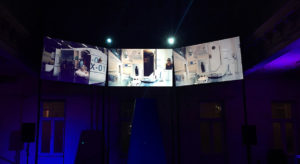 Reflexive discussion in the form of a space-time expanded interactive film. The text of the film was developed in a rizomatic writing game in exchange with the dramaturg and writer Marian Kaiser. https://player.vimeo.com/video/241363321
Reflexive discussion in the form of a space-time expanded interactive film. The text of the film was developed in a rizomatic writing game in exchange with the dramaturg and writer Marian Kaiser. https://player.vimeo.com/video/241363321
Discussion of the Concept with Space Architect Barbara Imhof: PUBLIC EVENT in the context of AP Angewandte arts science research Practice. November 29, 2017, 6 pm, Heligkreuzerhof, 1010 Vienna.
LUDIC METHOD Example #001: The Space architect Barabra Imhof created the space simulation habitat SHEE, Self-deployable habitat for extreme environments. It was used by Margarete Jahrmann and the Francophone filmmaker Samuel Dématraz to create a duration performance with pre-cognition elements and a pre-formed game experiment at the International Space University Strassbourg.
Barbara Imhof responds to the invitation for the first #Ludic method soirée in Vienna: “Seen from a top view, all my work is a game of many rules applied to topics of terrestrial and outer space design research and development. Designing from the unfamiliar might be a good short description…”
First exhibition 2020: Navigieren im Postdigitialen at AIL, Angewandte Innovation Lab Vienna, with a NEW AI_ RESISTANCE INSTALLATION opening 16th Jan 2020 mehr infos hier: http://www.margaretejahrmann.net/2020-neural-net-play/
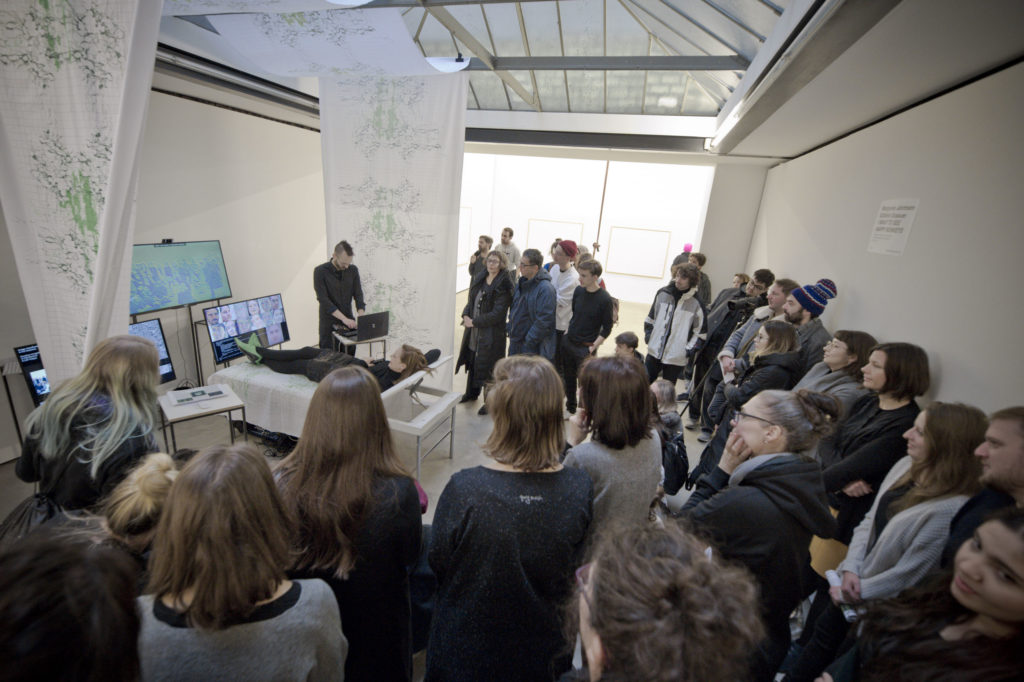
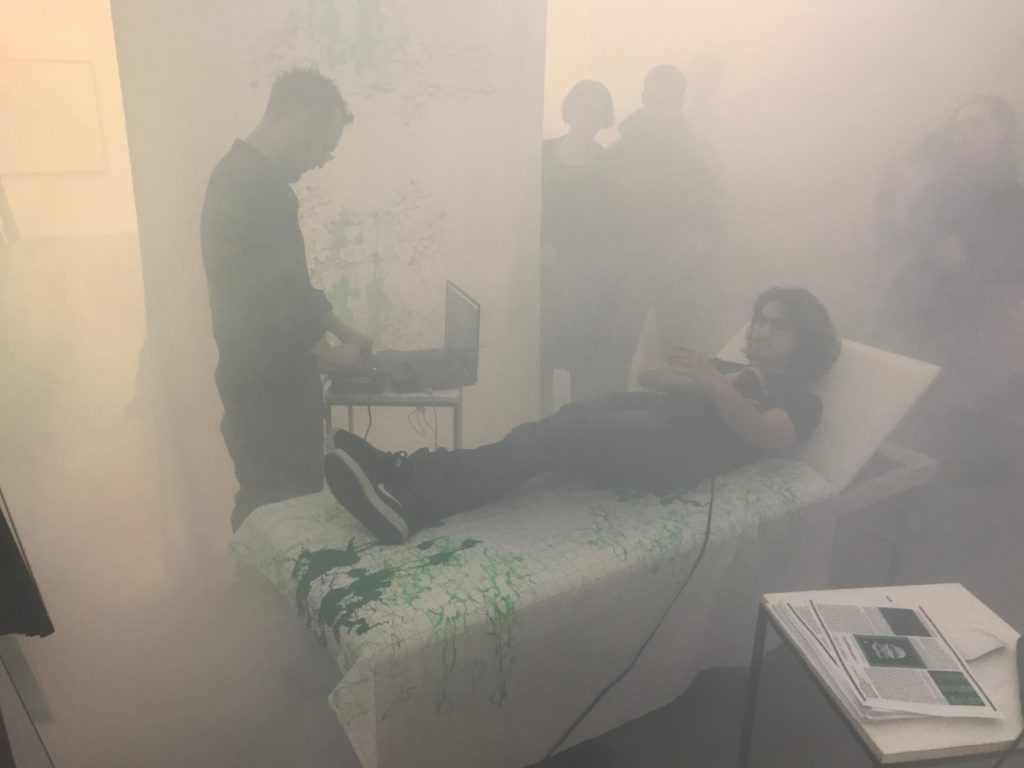
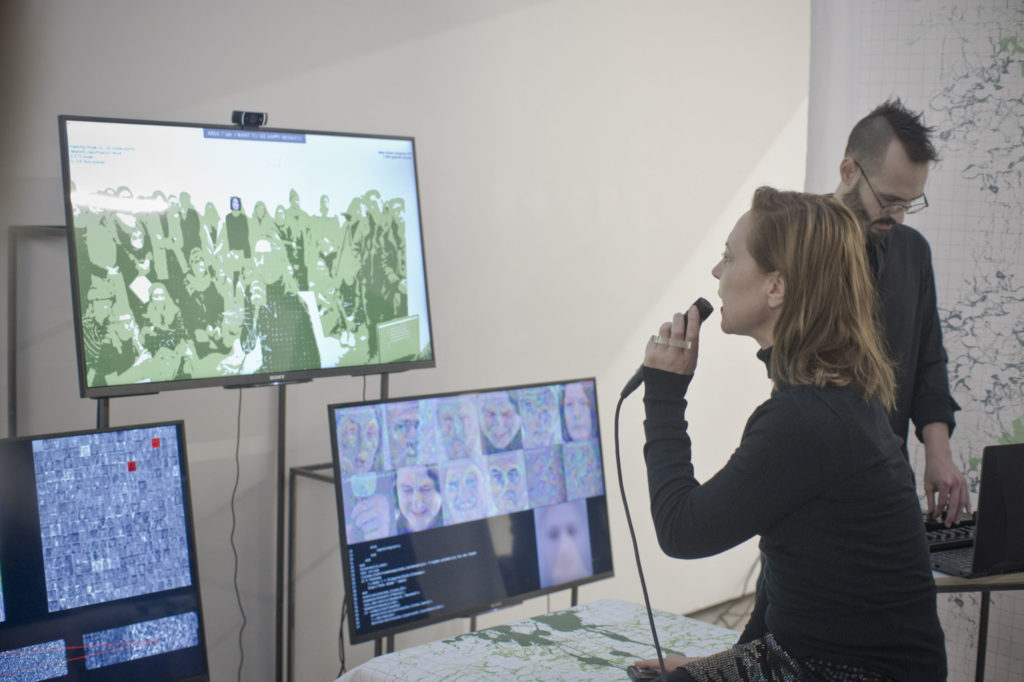
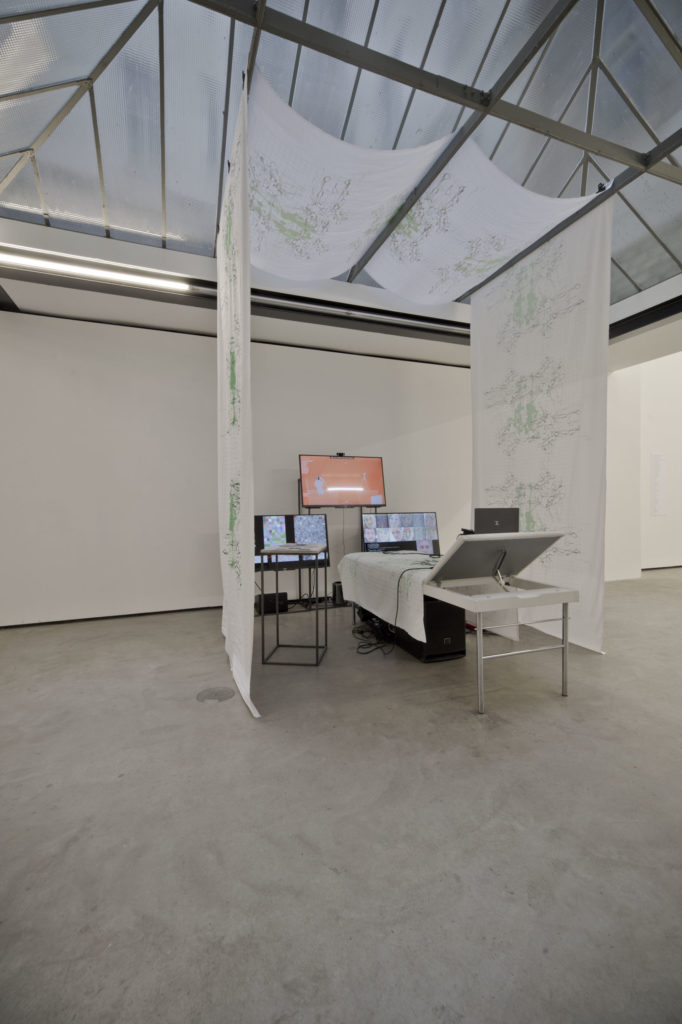
Screening and lecture at the Hongkong C0nnecting Spaces Gallery in June 2017 (hosted by the Zurich University of the Arts) at the occasion of the technopolitcs TIME LINE exhibition.
teaser: https://youtu.be/TYCS8OnLvoA